The story behind Arcadia’s mechanical dragonfly: a Falklands helicopter turned dance stage and Glastonbury’s newest addition
At this year’s Glastonbury festival, its newest addition celebrated the Earth and the bringing together of people – as well as putting on one hell of a party. Wallpaper* was invited for a tour
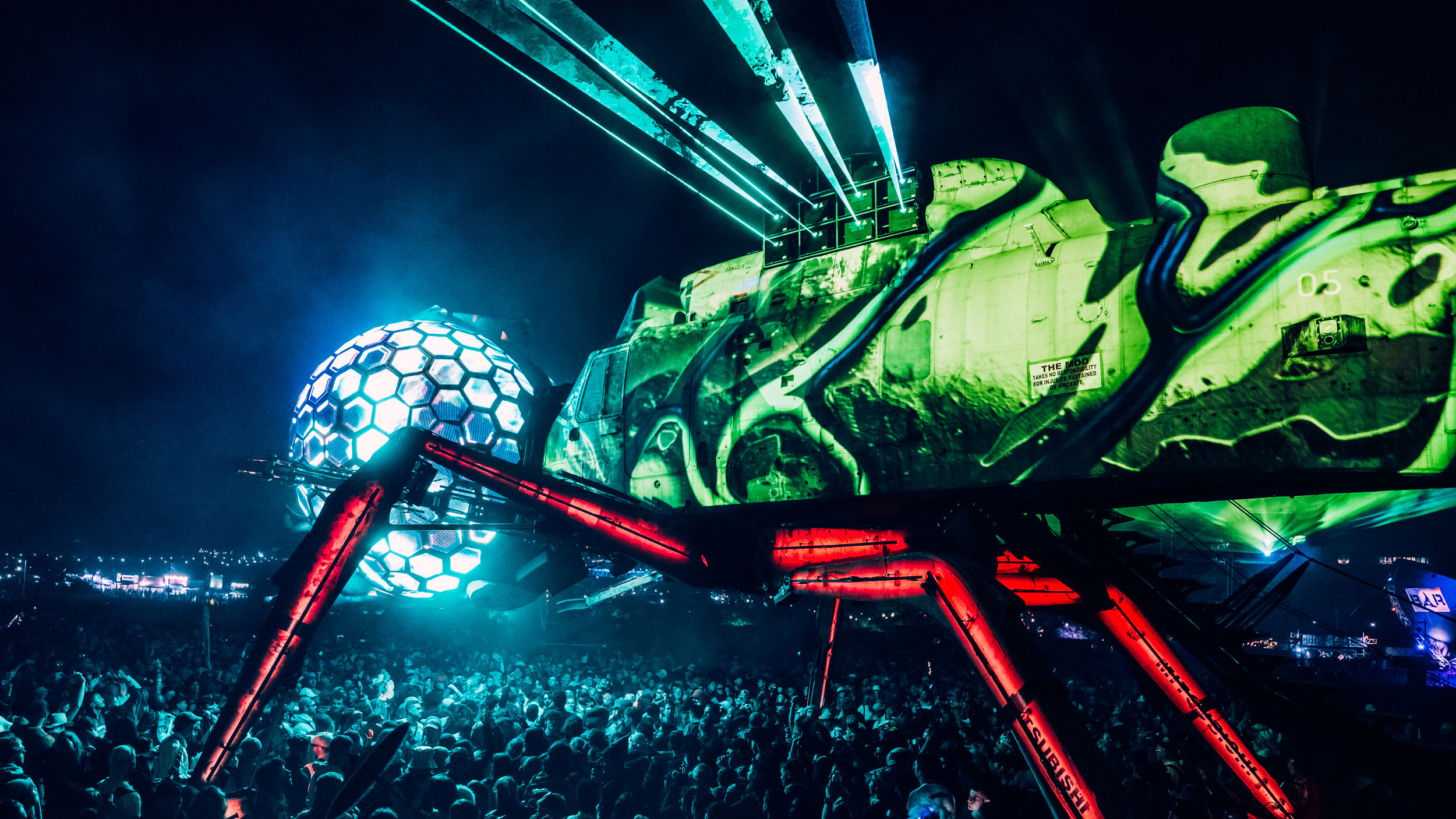
Glastonbury is many things to many people. For some, its draw is the ability to party into the small hours, often amidst the chaos of the site’s renowned South-East corner. For years, one of Glastonbury’s most hedonistic fields has been ruled by Arcadia – the sculptural art and dance collective known for their 50-tonne, mechanical fire-breathing spider. Said spider has toured the world, providing D‘n’B beats (and a few scorched eyebrows) to global festival goers, but this year, it was time for something new.
‘We have a problem with The Spider in that every year we brought it out, people seemed to like it even more,’ says Arcadia co-founder Pip Rush. ‘They were saying: “Whatever you do, don’t change the spider”, but we felt we needed a creative evolution. We were built off a bunch of people coming together and being creative – we needed some of that: a boost to do something new.’
Enter, The Dragonfly: a new, intricately designed stage with a unique story to tell. The design has been over a year in the making, the finishing touches still being applied when Wallpaper* comes to visit, hours before its grand opening. The project stays true to Arcadia’s ethos of uniting people around positive change.
‘It began when we found some Royal Navy helicopter fuselages. As they were unloaded, they started to look like a dragonfly in the sky,’ says Rush.
It prompted the Arcadia team to start scribbling out some ideas and planning their next project, the Falklands helicopter frame comprising the main body of the creature. ‘We wanted to repurpose the intent of that bit of machinery, which was designed for division and destruction, and flip it: to create a space that’s unifying.’
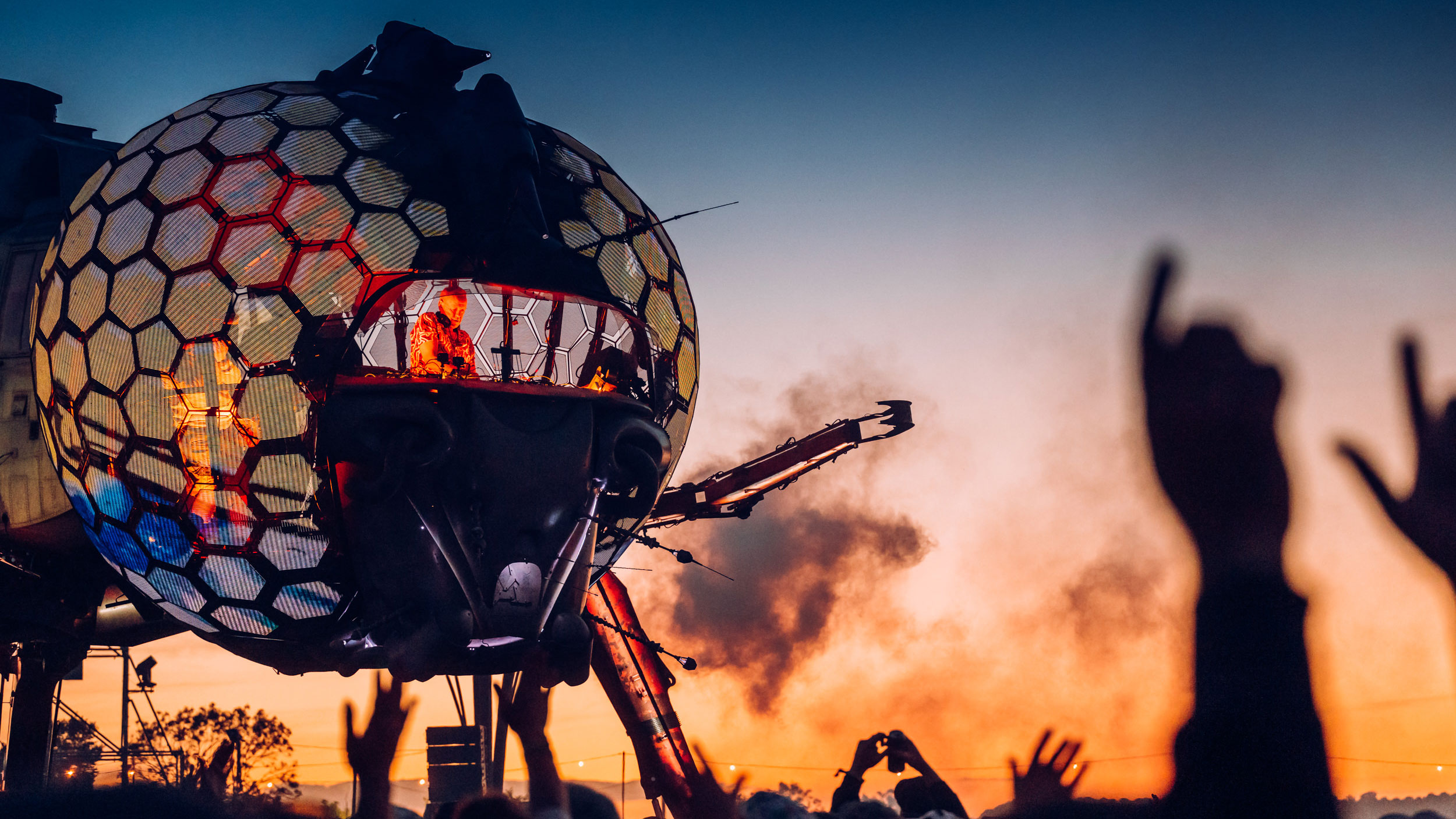
One of the main challenges was to create the dragonfly from salvaged materials, but maintain lifelike proportions.
‘It’s been an enchanting journey,’ explains co-founder Bertie Cole. ‘The Sea King itself was obviously something that was a really beautiful shape, that we couldn’t change. We derived the scale from that. Then we kept going back to real dragonflies, their posture, the proportions of their legs. We took that blueprint into scrap yards.’
Wallpaper* Newsletter
Receive our daily digest of inspiration, escapism and design stories from around the world direct to your inbox.
After ‘messing about in scrapyards’ for years, it was in a huge quarry in Ireland that Cole struck gold. ‘I found these old excavators dating back to the 1960s. I spent days sifting through them to find the right limbs to match the sizes and proportions of the Sea King.’ The old diggers were transformed into the dragonfly’s legs, which stand tall above revellers, partying underneath.
For the insect’s wings, after going down many paths, they settled on lasers to bring the creature to neon life. And for its head – where DJs such as Shygirl, Fatboy Slim and Amelie Lens spun tunes all weekend – they connected hundreds of translucent screens, mimicking the insect’s many eyes.
For those who loved the grandeur of The Spider's fire-breathing prowess, bullrushes, around the edge of the arena offer a similar fiery thrill. Only this time, the flames are produced using bio-ethanol – supporting Glastonbury and Arcadia's sustainable focus.
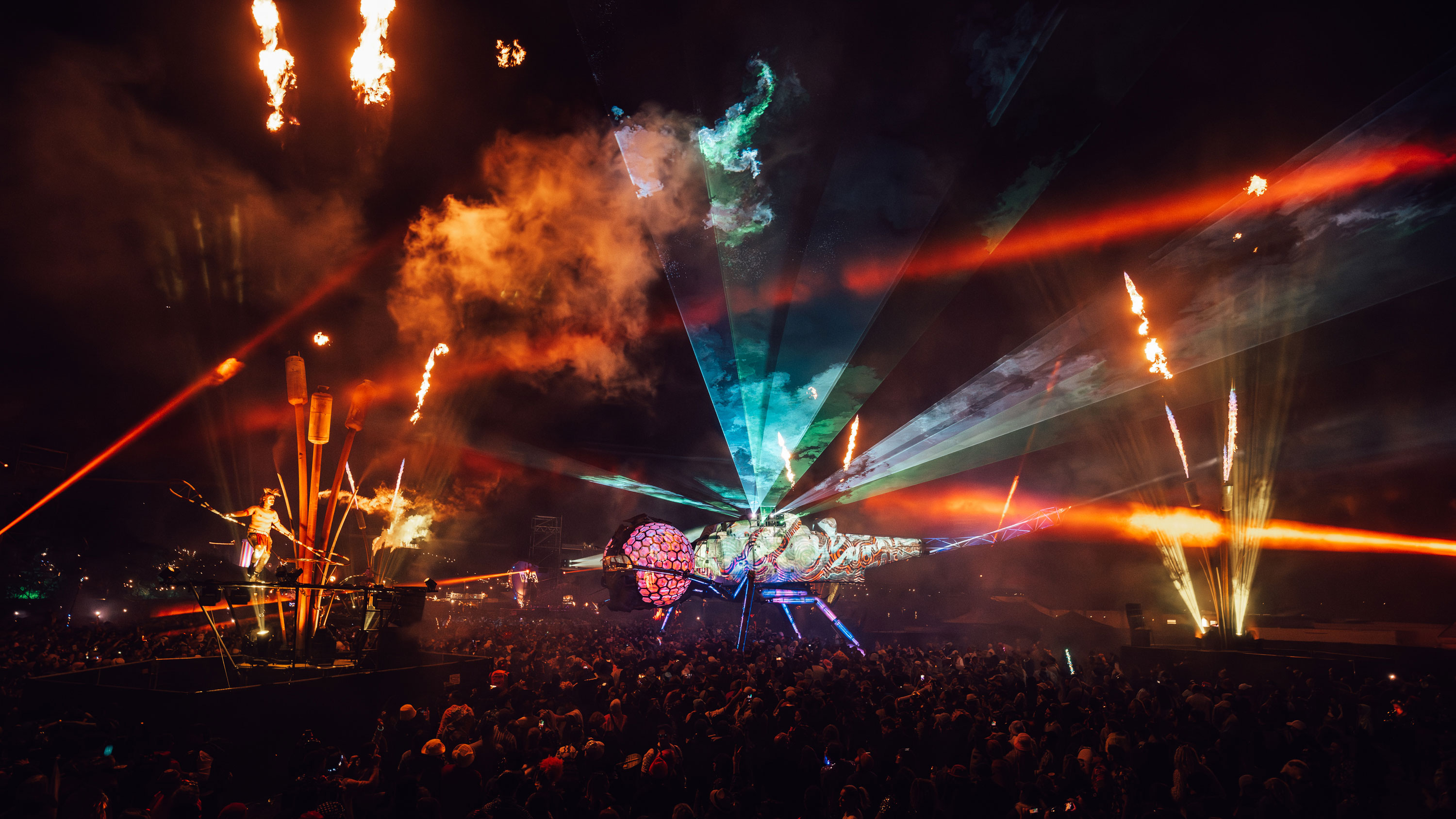
Though The Spider might no longer be a Glastonbury fixture, its web has spread far and wide, most notably building a unique connection with a First Nations community in Australia. The Wadjuk Noongar nation were captivated by The Spider, who in local lore, connects and grounds all people via its web. In celebration, they chose to perform an ancient song about a spider, for the first time in 100 years, under the Arcadia machine.
Maintaining this connection and friendship, Glastonbury this year welcomed the Wadjuk Noongar nation into the fields of Somerset. Each night, members of Arcadia and the First Nations community performed Waraloo – a song about a dragonfly – to open the stage: a spectacular ceremony that saw The Dragonfly burst into life.
As for what’s next for Arcadia, we can expect more mechanical creatures gracing festivals around the world.
‘We’re consulting for a big festival in America to go out and build something there. It will be a creature but we can’t talk too much about it at the moment,’ says Rush. ‘But it will be on a huge, huge scale.’
Charlotte Gunn is a writer and editor with 18 years experience in journalism, audience growth and content strategy. Formerly the Editor of NME, Charlotte has written for publications such as Rolling Stone, CN Traveller, The Face and Red.
-
 A stripped-back elegance defines these timeless watch designs
A stripped-back elegance defines these timeless watch designsWatches from Cartier, Van Cleef & Arpels, Rolex and more speak to universal design codes
By Hannah Silver
-
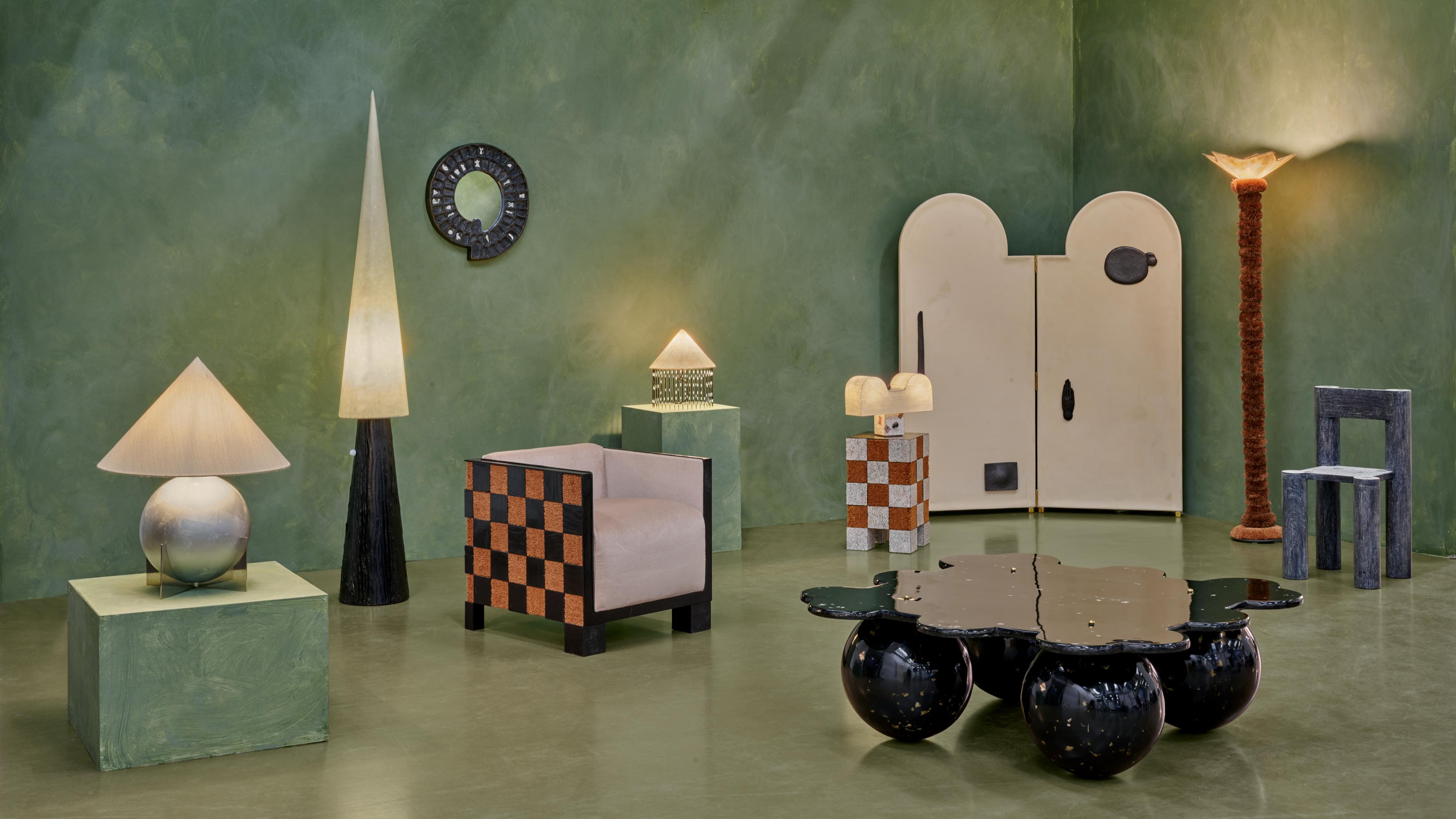 Postcard from Brussels: a maverick design scene has taken root in the Belgian capital
Postcard from Brussels: a maverick design scene has taken root in the Belgian capitalBrussels has emerged as one of the best places for creatives to live, operate and even sell. Wallpaper* paid a visit during the annual Collectible fair to see how it's coming into its own
By Adrian Madlener
-
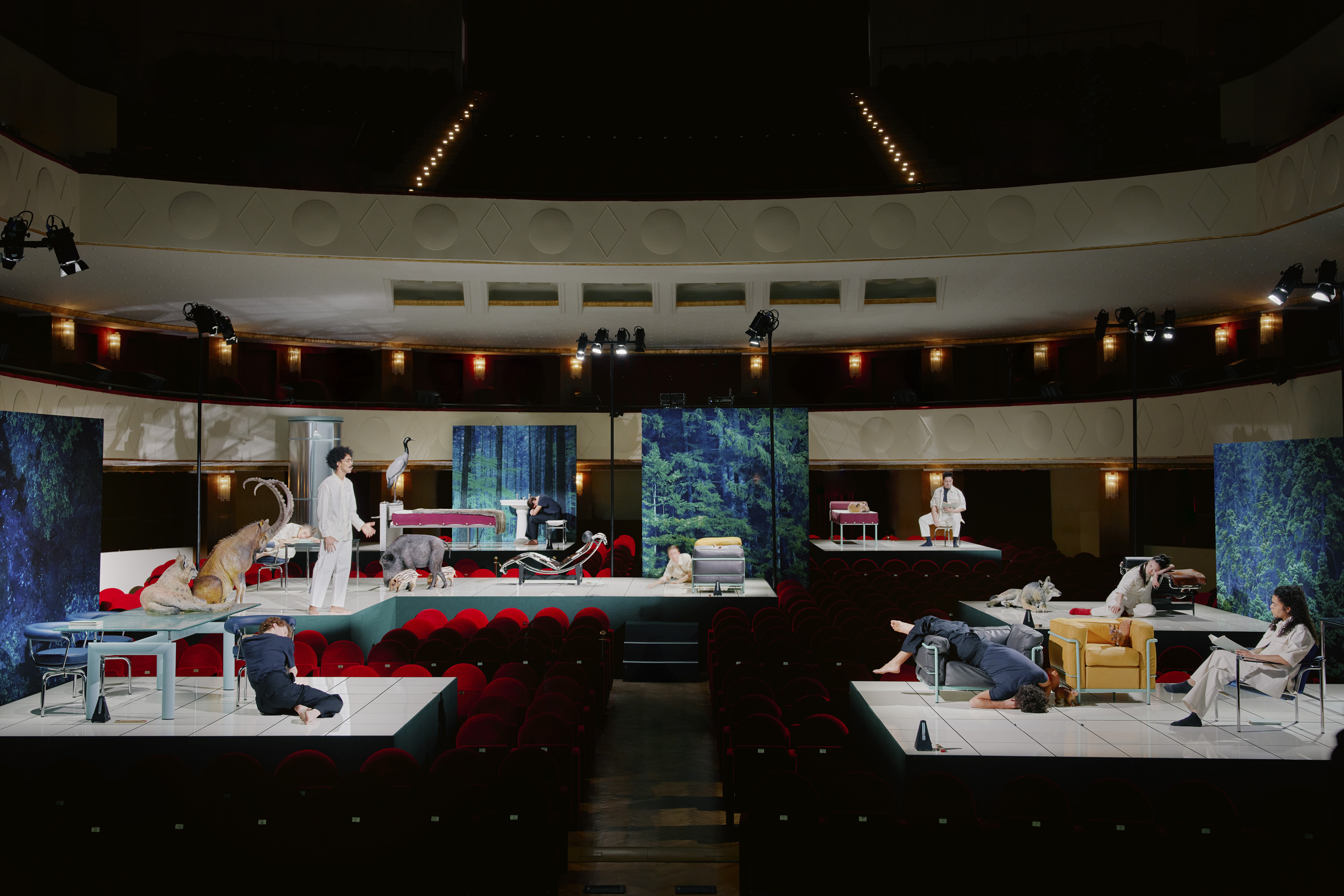 Move over, palazzos. Performances were the biggest trend at Milan Design Week
Move over, palazzos. Performances were the biggest trend at Milan Design WeekThis year, brands brought on the drama via immersive installations across the city
By Dan Howarth
-
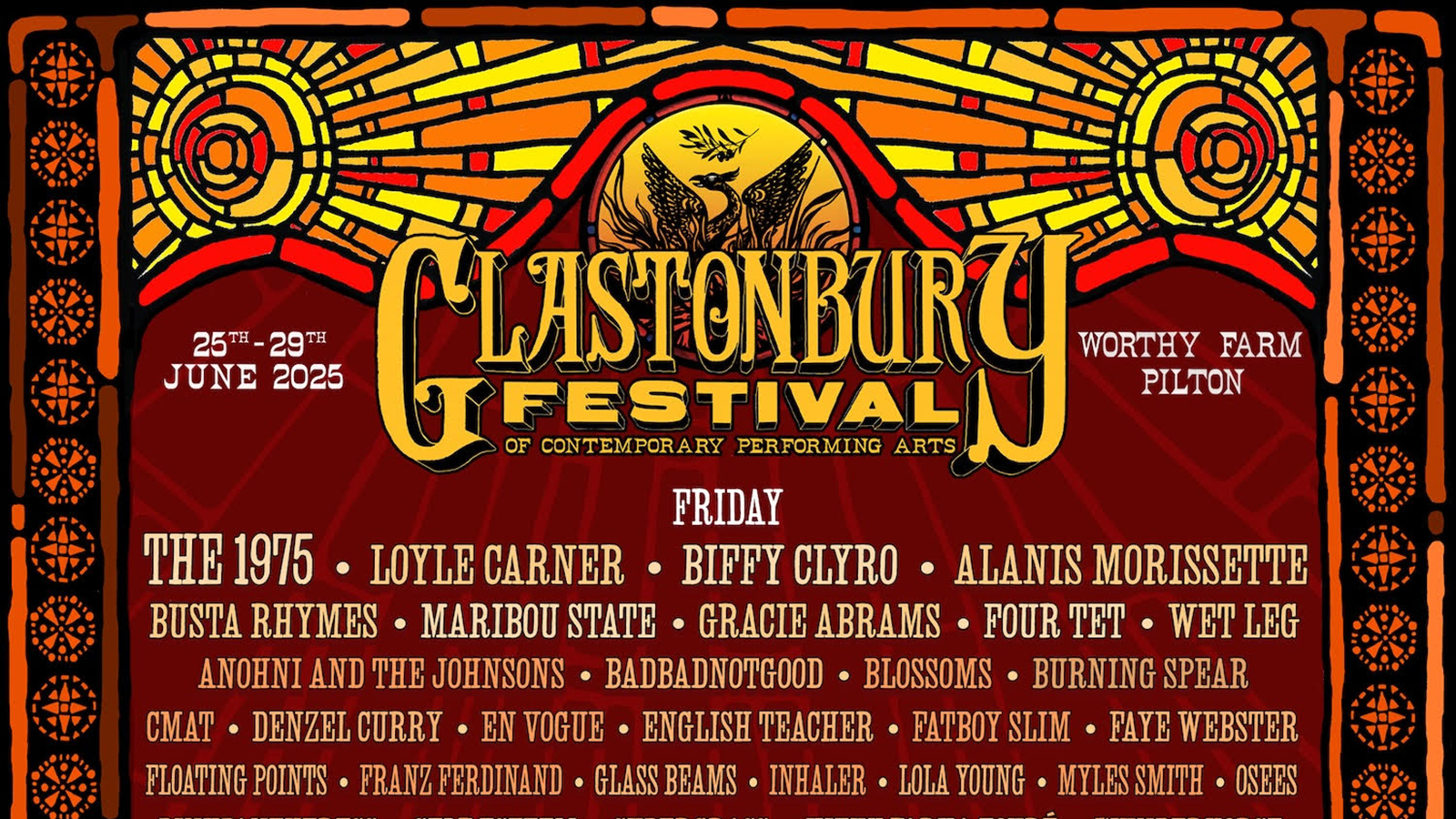 Stanley Donwood on decades of Glastonbury poster design
Stanley Donwood on decades of Glastonbury poster designWhile Glastonbury fans huff and puff over this year's line-up announcement, we talk to the man responsible for designing the festival’s poster, for the last two decades
By Craig McLean
-
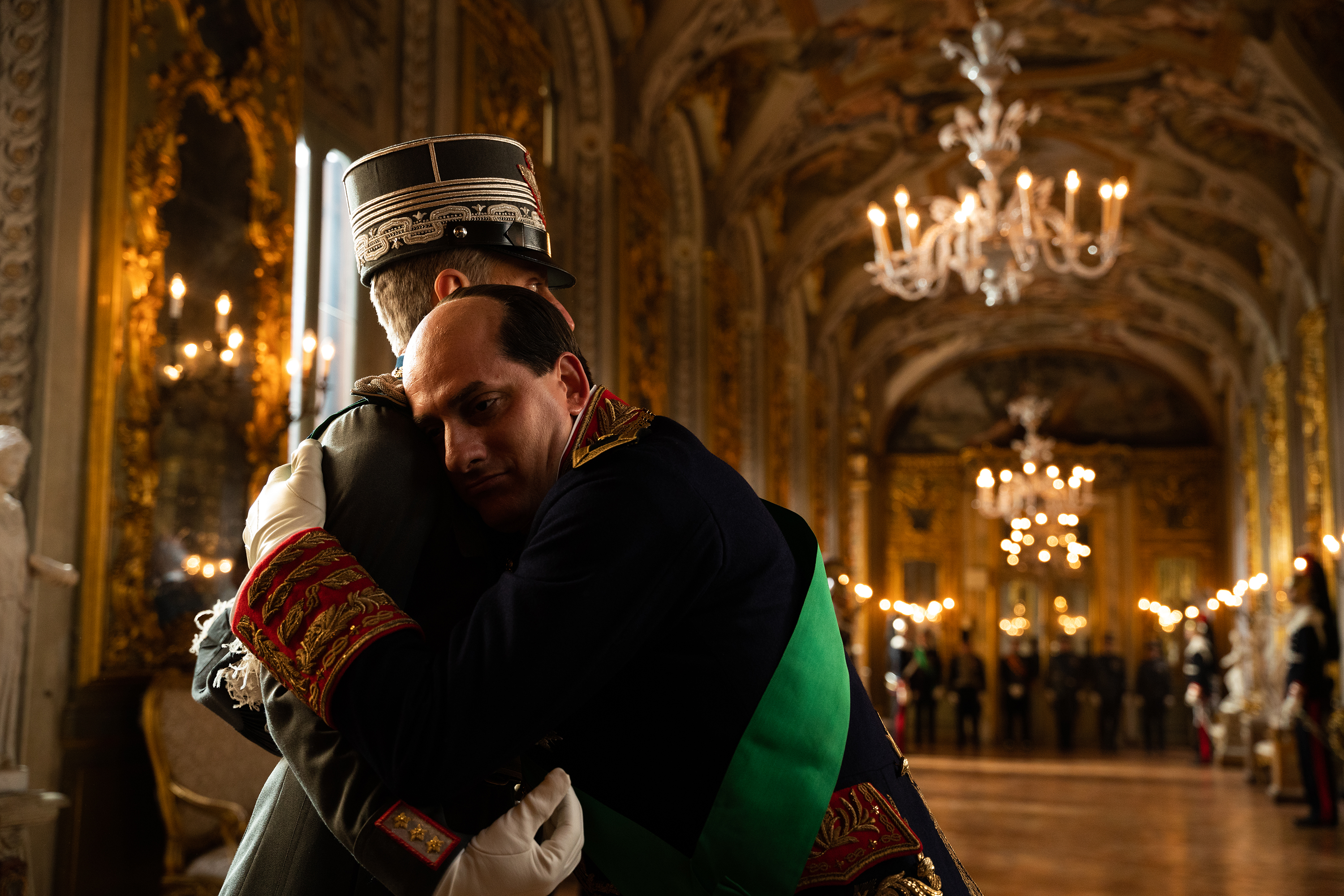 The Chemical Brothers’ Tom Rowlands on creating an electronic score for historical drama, Mussolini
The Chemical Brothers’ Tom Rowlands on creating an electronic score for historical drama, MussoliniTom Rowlands has composed ‘The Way Violence Should Be’ for Sky’s eight-part, Italian-language Mussolini: Son of the Century
By Craig McLean
-
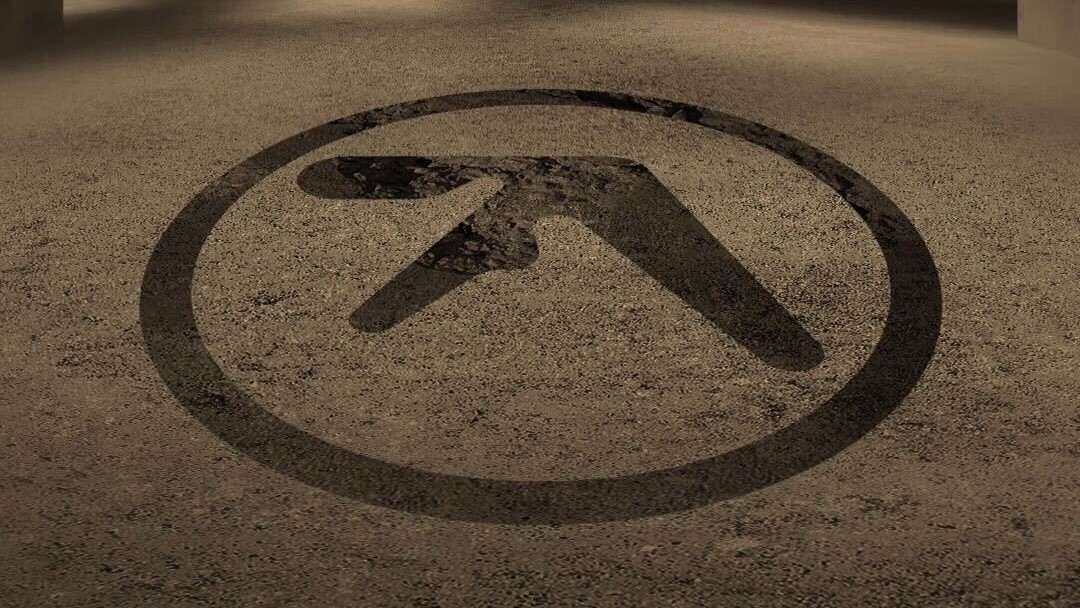 Tate Modern to host Aphex Twin listening experience
Tate Modern to host Aphex Twin listening experienceA free listening event for Aphex Twin's reissued album 'Selected Ambient Works II (Expanded Edition)' on the 25th of October
By Smilian Cibic
-
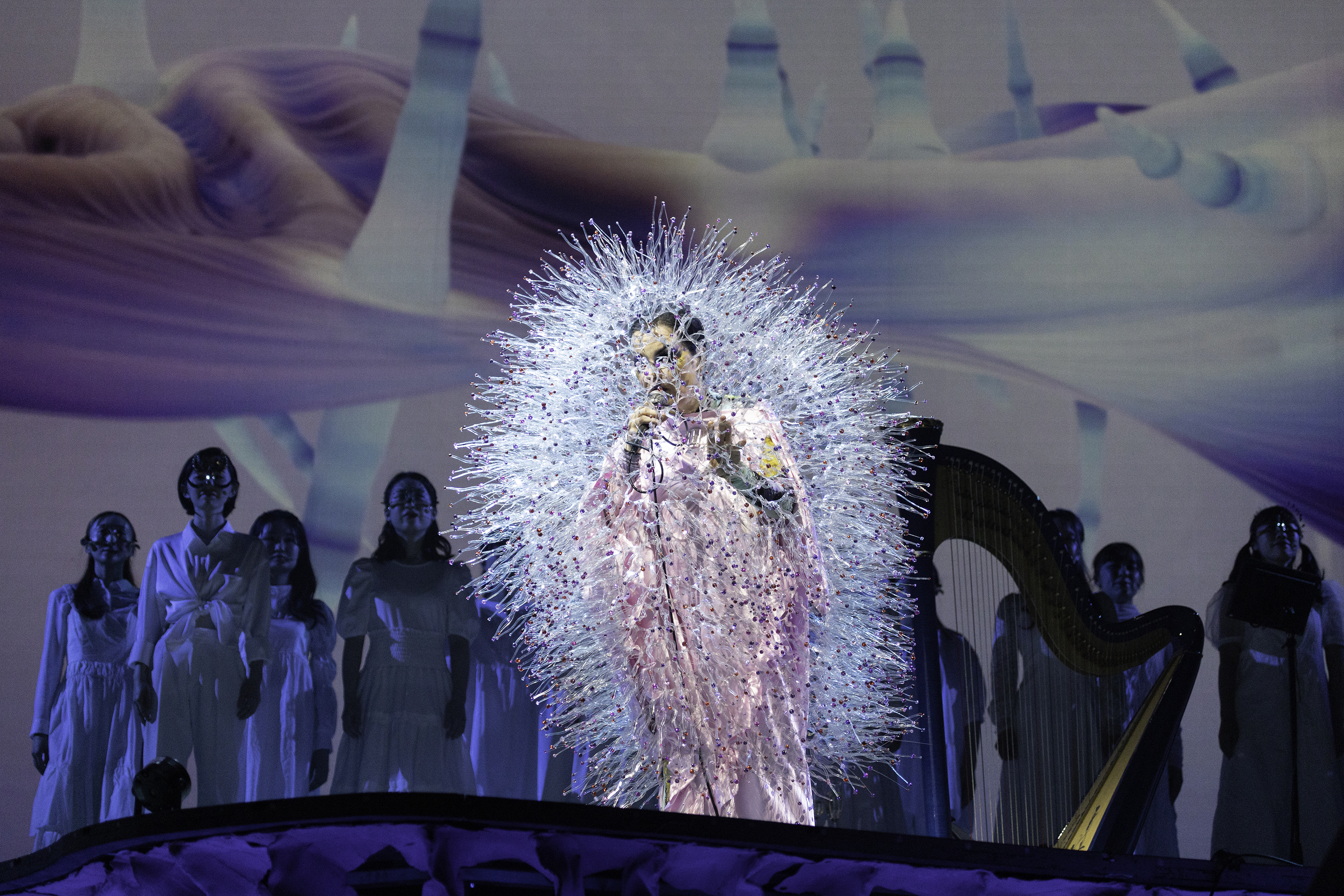 Björk announces Cornucopia: The Book
Björk announces Cornucopia: The BookThe photographic documentation of Björk’s otherworldly tour
By Smilian Cibic
-
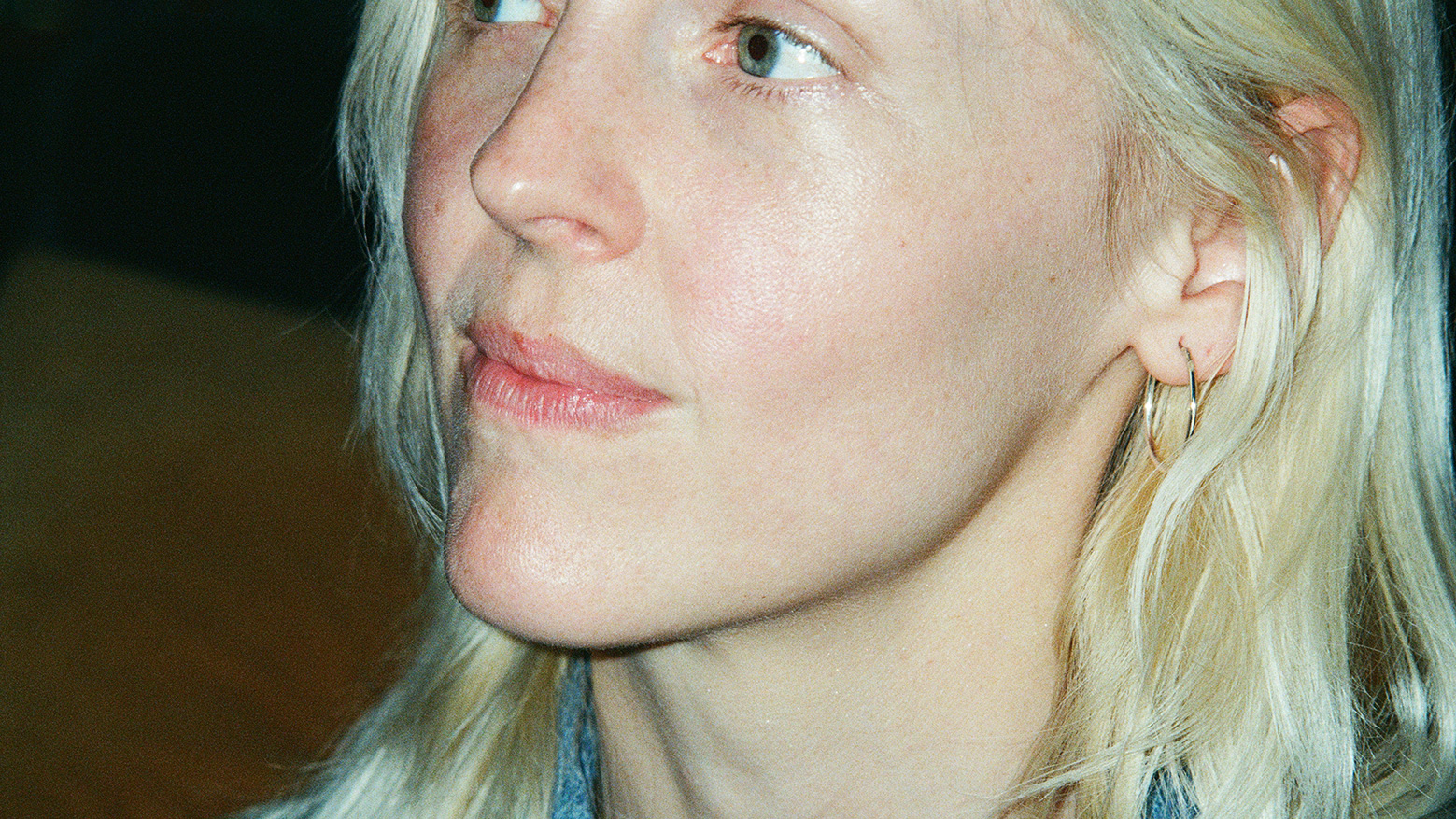 'Anything I put out into the world, I want to be a prayer': musician Laura Marling on eschewing traditional merch for tarot-inspired prints
'Anything I put out into the world, I want to be a prayer': musician Laura Marling on eschewing traditional merch for tarot-inspired printsAs Laura Marling prepares to release her eighth album, 'Patterns in Repeat', Craig McLean learns about another artistic pursuit that occupies her time
By Craig McLean
-
 'She made me feel like I could, and should, be myself': SOPHIE's friends and collaborators on her enduring legacy
'She made me feel like I could, and should, be myself': SOPHIE's friends and collaborators on her enduring legacyIt's been nearly four years since boundary-breaking electronic music producer and artist, SOPHIE, tragically passed away. As fans are gifted a last, posthumous album completed by her loved ones, music critic El Hunt reflects on her remarkable legacy
By El Hunt
-
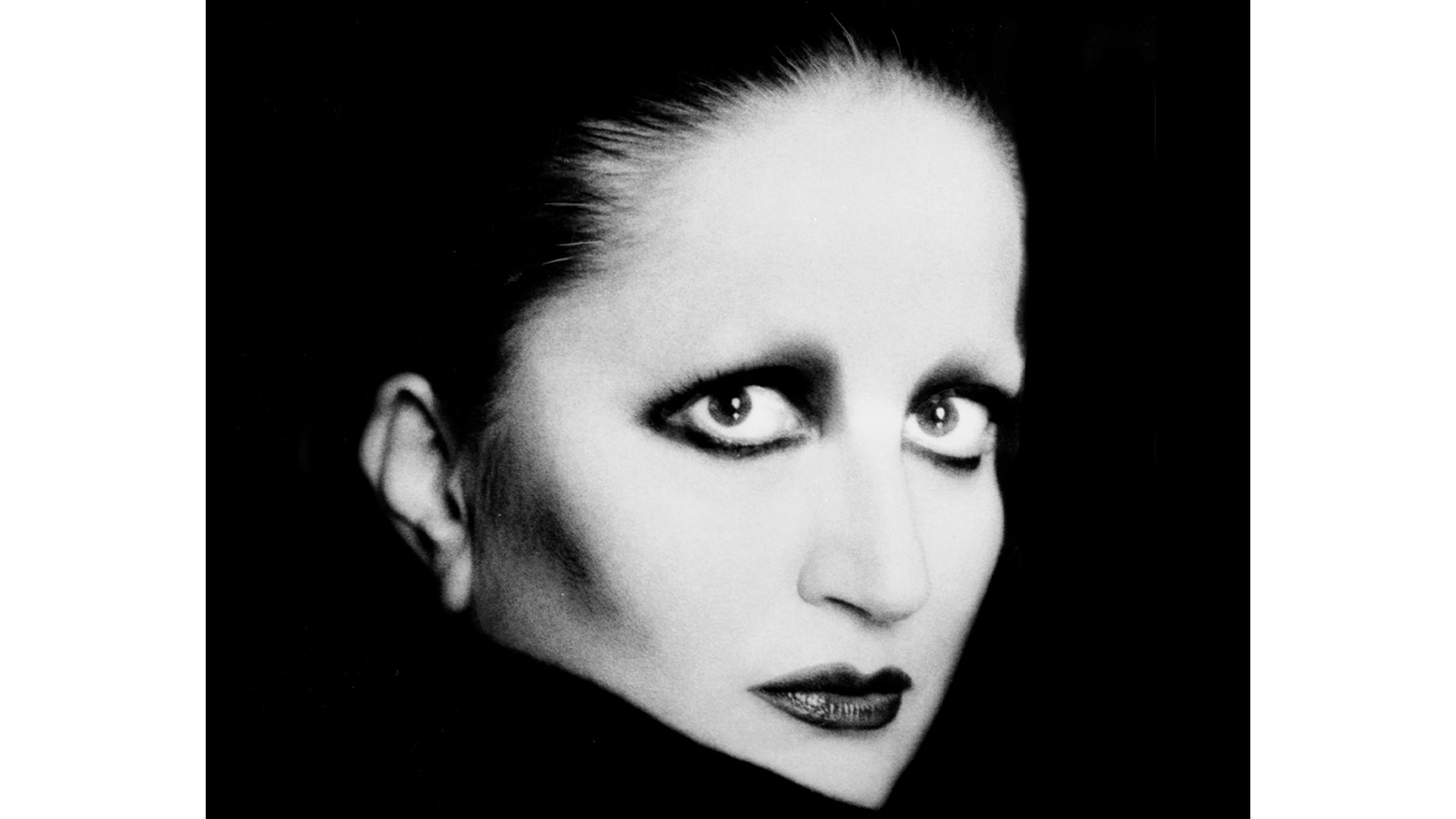 Balenciaga Music and Italian singer Mina collaborate on wearable music
Balenciaga Music and Italian singer Mina collaborate on wearable musicBalenciaga Music has collaborated with Italian singer and style icon Mina, which marks her first foray in working with a fashion house and launching official merchandise of any kind
By Tianna Williams
-
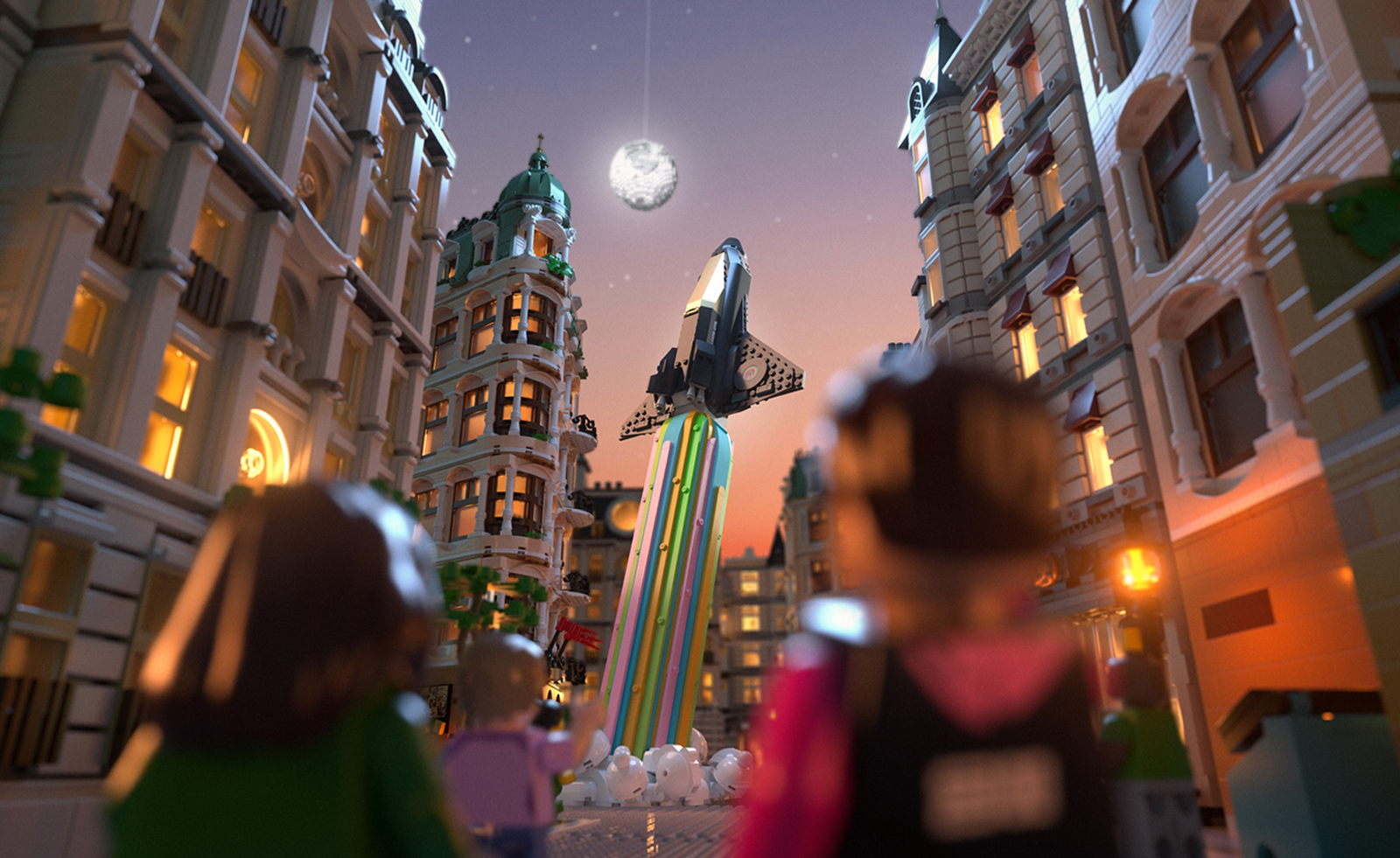 Pharrell Williams on his new space-themed Lego set and movie
Pharrell Williams on his new space-themed Lego set and moviePharrell Williams tells Wallpaper* why he is so excited about working with Lego
By Hannah Silver